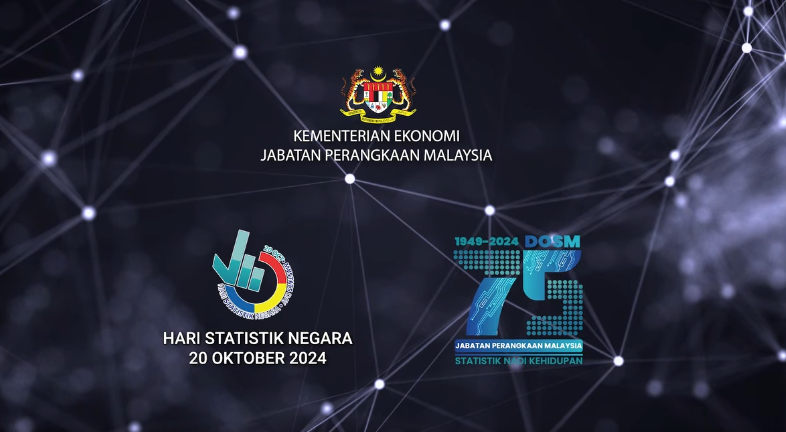Inactivity
Click here for detail indicators
Introduction & Background
Employed person are deemed to be in time-related underemployment if they consider their work hours insufficient and they are willing and available to engage in extra hours of work in the reference period. In the past, this situation was also known as “visible underemployment”. Underemployment could also be understood by workers to involve work hours that are perceived to be “unsatisfactory” because of insufficient hours or insufficient compensation or inadequate recognition of their skill level. The challenge then would be to find an acceptable way to quantify this perception of dis-satisfaction. It was agreed that “visible” underemployment would be best quantified in terms of the hours of work giving rise to the indicator on time-related underemployment. As a corollary, “invisible” underemployment could then be understood to refer to measures in terms of insufficient income earned and the more difficult measurement of productivity forgone because of the underutilization or mismatch of skills. Hence, time- related underemployment is considered as the best indicator to measure underemployed persons in the labour force.
The definition of time-related underemployment was first adopted in 1998 at the 16th International Conference of Labour Statisticians (ICLS) and further revised in the 19th ICLS in 2013. Three criteria are considered relevant for this purpose, involving employed persons in a reference period that are:
- Willing to work additional hours
- Available to work additional hours
- Had worked less than a threshold relating to working time
The measure of underemployment reflects the desire of workers to seek additional work hours, even if they are not actively seeking them out. This could be contrasted to the definition of unemployment where the person must be actively seeking employment but cannot find any acceptable offers. This means that if potential workers are not actively seeking employment they are considered to be inactive or outside the labour force (see KILM 1 and 9).
The criteria discussed above give rise to difficulties in standardizing the measurement of desired additional work hours. In an attempt to overcome this problem,
there was agreement to use work hour thresholds to designate underemployment by grouping them around three concepts or definition codes:
- Employed persons reporting as having part-time work or whose hours of work (actual or usual) were below a certain cut-off point involuntarily – “involuntary part-time workers”.
- Employed persons whose hours of work (actual or usual) were below a certain cut-off point and who wanted to work additional hours.
- Employed persons whose hours of work (actual or usual) were below a certain cut-off point and who actively sought to work additional hours.
Code 3 is considered to be the strictest code and aligned with the definition of unemployment. If available, information from all three codes would provide information on how the amount of underemployment reported differs due to the definitions used.
KILM 12 has two measures of the amount of workers in time-related underemployment: a) one as a percentage of the labour force; and b) another as a percentage of total employment. The indicators are further disaggregated by gender and age group. The information is captured through Labour Force Surveys conducted by Department of Statistics of Malaysia (DOS) using the household survey methodology.
Why KILM 13 is important?
KILM 12 is used as a measure of the underutilization of the workforce’s productive capacity. This statistics can be used to supplement information from other KILMs on employment and unemployment to enrich the analysis of the efficiency of the labour market. To give an even broader picture of the condition of the labour market, this indicator could be further assessed in conjunction with other KILMs such as the hours of work under KILM 7; KILM 2: employment to population ratio, KILM 13: inactivity rates, KILM 3: status in employment and KILM 18: working poverty and labour productivity. In combination, analyst would be able to evaluate comprehensively trends in the varied facets of the labour market thus contributing to policies to generate employment for all segments of the workforce.
In should be recognized that in most circumstances just identifying whether a person is employed or unemployed does not add very much to better understand the issues certain segments may be facing. So time-related underemployment adds some detail to challenges some citizens face as workers, particularly in situations involving small-scale agriculture activities, the provision of basic services and an array of informal activities, where workers are most often on the edge of survival eking out a living which provide meagre earnings whether in cash or in kind.
Few people with these jobs and working only a few hours a week would consider themselves to be gainfully employed, even though in statistical terms they may be classified as such, and therefore KILM 12 would single them out to be a segment of the workforce that deserve some attention.
Low unemployment need not necessarily signify that a country’s labour market is functional and near full employment, if time-related unemployment is prevalent. This has implications for the earning levels of the workforce, their productivity capability and a possible mismatch or underutilization of their skills. Furthermore, this may well lead to a situation where a large segment of the workforce is constantly looking for additional work hours or jobs, thereby competing with people who are without a job, particularly young workers first entering the workforce.
Limitation/ Comparability
As is a common issue for all KILMs, due caution must be taken into consideration when making cross country comparisons because the various data collection and estimation methods of each jurisdiction contribute to important variations in KILM 12 statistics. Most countries count workers who want to have additional hours of activities (code 2), but many countries also predominantly include workers who report involuntary reasons for either not working longer hours or the current hours worked (code 1). However, what constitutes “involuntary” varies across countries giving rise to comparability problems. Finally, very few countries actually ask workers whether they have actively sought to secure more hours of work (code 3).
Since no international definition of “part-time” work (KILM 6) has been agreed to, each country may differ in their description of the threshold of “hours actually worked” below which time-related underemployment is said to be present. For example, some countries define the threshold as the legal hours worked, others consider it to be the usual hours worked of full-time employed persons, and the OECD consider the underemployed as those involuntarily working part-time at or below 30 hours a week.
Moving forward
Future analysis would be broaden to give information, if available, on which sectors of the economy are susceptible to underemployment. If possible at attempt at highlighting the prevalence of underemployment by broad categories of occupation could also be useful. Finally, while benchmarking with other countries might seem difficult for this KILM we should try to compare at least the trend in this indicator, even if it is not possible to compare the amount of underemployment between countries directly.
 Bahasa Melayu
Bahasa Melayu  English
English 







